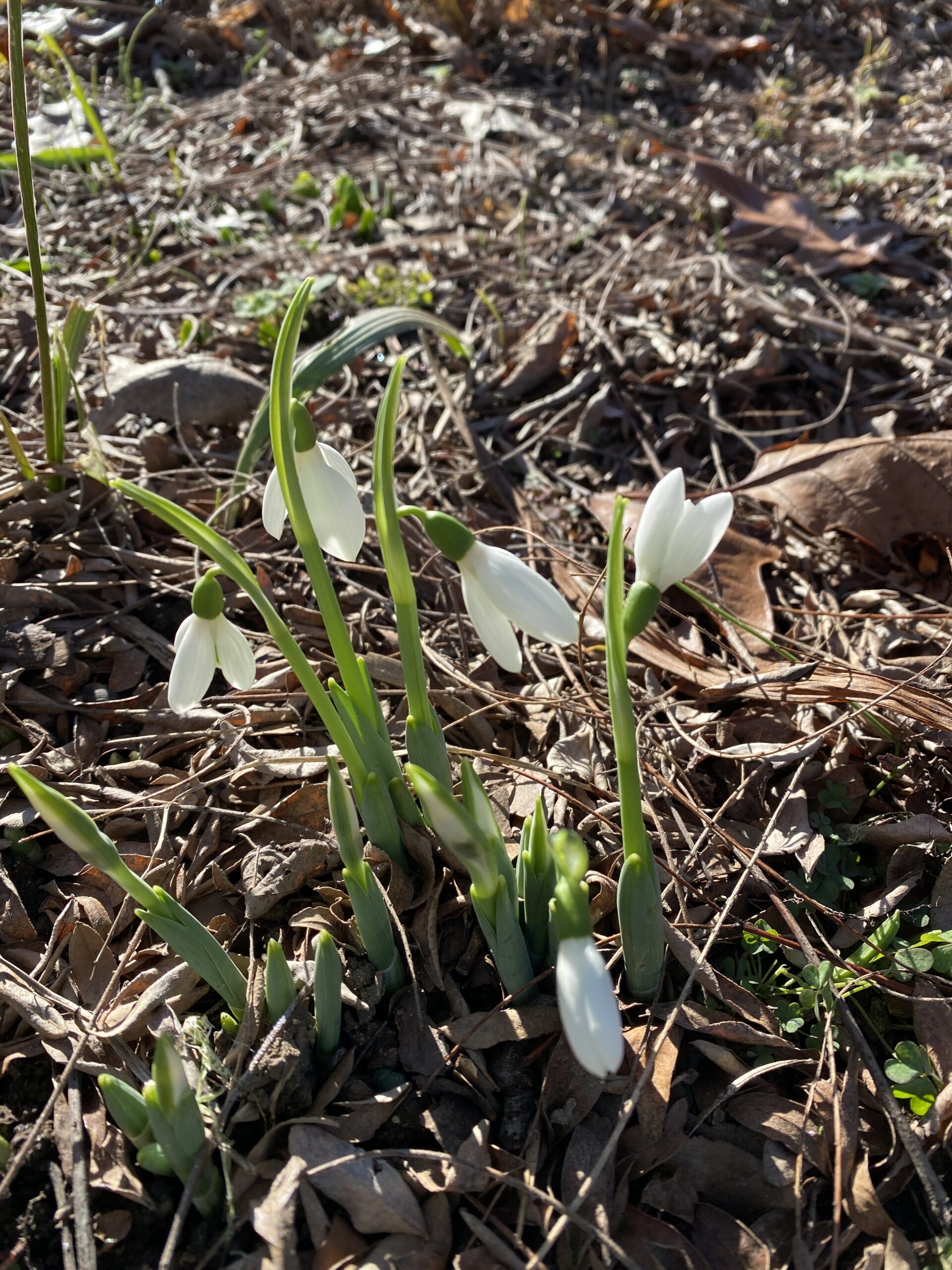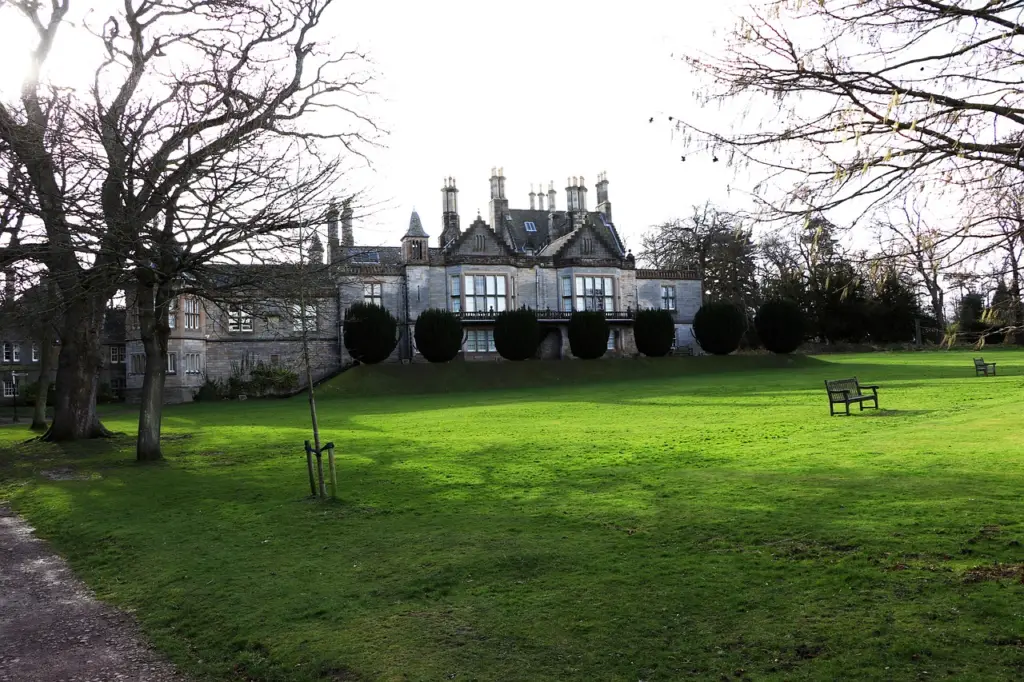Solidago sp. (Goldenrod) within the precept hayfield on 10-24-21, #851-8.
Whats up all people! This is not exactly a standard time of the yr to be determining wildflowers on the farm proper right here in west-central Missouri. Normally, now we have now had an “F” by now and most all of the issues is ineffective or dying. Timber that flip shiny colors, like many maple cultivars, are nonetheless inexperienced. The earlier maple in “the alternative yard” is altering shade and the leaves are falling, nonetheless they’d often be orange. The two maples in entrance of the house and the south side are nonetheless inexperienced… Proper right here it is, October 25, and nonetheless no “F” throughout the forecast… I am really not complaining. 🙂
I went to the south hayfield on October 24 to take a look on the Women’ Tresses as soon as extra. I was moreover hoping I’d uncover the Elephant’s Foot as soon as extra which didn’t happen (not lower than not throughout the south hayfield). The flowers of Women’ Tresses have been beginning to fade, so what I was trying to find apparently didn’t happen. I am nonetheless leaning in direction of Spiranthes magnicamporum although their lateral sepals didn’t unfold outward. I really feel the flowers the way in which through which they’re and the stems with the sheathing bracts are ample to substantiate id.

Arphia xanthoptera (Autumn Yellow-Winged Grasshopper) on 10-24-21, #851-6.
I walked to the once more of the south hayfield to see if there was one thing attention-grabbing and I seen this brown grasshopper. Its scientific id is Arphia xanthoptera and the widespread title is Autumn Yellow-Winged Grasshopper. I had certainly not seen a grasshopper this shade, nonetheless photographs of the species current they arrive in numerous shades. I was shocked it actually let m keep it for a while. Usually, grasshoppers switch spherical to the alternative side of a stem or leaf so that you just obtained’t see them. Within the occasion you get too shut they solely fly off. This fellow didn’t seem to ideas sitting on my hand to get {a photograph}. After that, it left its calling card and flew off. As he flew, I might even see his wings have been crimson and yellow.
I am in an argument with Grammarly at the moment… I do know we’re every correct and unsuitable on the an identical time. Grammarly thinks I shouldn’t capitalize the title on all sides of the hyphen, nonetheless that is the means I on a regular basis do it. If a person’s title incorporates a hyphen, every names are capitalized. We’re every unsuitable on account of some well-paid taxonomists assume widespread names shouldn’t be capitalized the least bit. Totally different taxonomists are in disagreement. Consistent with “some”, even family names shouldn’t be italicized and others certain… I capitalize widespread names and italicize family names and so do lots of the web sites I exploit.
After I accomplished throughout the south hayfield I climbed over the fence and entered the precept hayfield. Not prolonged after I was within the precept hayfield, I stumbled on a wierd plant I hadn’t seen sooner than.

Acalypha gracilens (Slender Three-Seeded Mercury) on 10-24-21, #851-2.
It was pretty windy so I wanted to take way more photographs than common. This Acalypha gracilens (Slender Three-Seeded Mercury) was protruding like a sore thumb adorned in its fall colors. I had certainly not seen it sooner than, so I knew I had acknowledged a model new species on the farm. That is on a regular basis thrilling. I knew it was a member of the plant family Euphorbiaceae and I was acceptable. I solely noticed one plant on the twenty fourth nonetheless I wished a few further photographs so I went once more on the twenty fifth. I couldn’t uncover the exact plant, nonetheless I managed to go looking out two further. The second plant I found was solely 4 1/4″ tall nonetheless the one from the twenty fourth appeared barely larger. They’re going to actually develop to 36″ tall…

Acalypha gracilens (Slender Three-Seeded Mercury) on 10-25-21, #852-3.
The Acalypha gracilens is a neighborhood of the southeastern and east part of the US. It is pretty widespread in some states and pretty unusual in others. It solely has a few observations throughout the state of Missouri and none anyplace near proper right here.
Vegetation develop in numerous soil and light-weight conditions which makes them very adaptable. In some circumstances, they’re going to develop into weedy and develop in any other case from location to location making them significantly tough to find out.
The vegetation produce every feminine and male flowers on the an identical raceme. The female flowers are on the lower half whereas the male flowers are on the upper half. Flowers are wind pollinated they often develop into further “obvious” after pollination… Hmmm… We have had a great deal of wind lately so that they have to be happy. This species produces fruit with 3 sections with one seed per half. There is a title for that nonetheless I can’t take into account it at the moment. It is believed the seeds are dispersed by explosion or by ants. The truth is, there have been no seeds after I took the pictures so I couldn’t give it a try. I assume that provides me a motive to return to experiment. 🙂
I am engaged on the net web page for this plant…
<<<<+>>>>

Amanita bisporigera (Jap North American Destroying Angel) on 10-24-21, #851-4.
Whereas behind the once more pond, no person might help nonetheless uncover the Amanita bisporigera (Jap North American Destroying Angel) alongside the creek on the alternative side of the fence. There have been quite a lot of on prime of the monetary establishment, nonetheless the best was rising on the side.

Amanita bisporigera (Jap North American Destroying Angel) on 10-24-21, #851-5.
This fungi is simply not one you’d want to try in your favorite spaghetti sauce. Within the occasion you eat it, you will start feeling unwell in a short time nonetheless then you definitely’ll begin to actually really feel larger. The damage has already been achieved and you may die inside 4-6 days…
<<<<+>>>>

Symphyotrichum sp. ? on 10-24-21, #851-12.
By now you will know my confusion within the case of quite a lot of members of the Symphyotrichum genus. I found quite a lot of of these vegetation rising on all sides of a drainage ditch behind the pond throughout the once more pasture. Correct off, I knew I hadn’t acknowledged this one sooner than. I was type of excited nonetheless I rapidly realized I was going to be in a predicament… This is a member of the aster family, seemingly a species of Symphyotrichum with leaves that resemble a species of Erigeron… Why throughout the heck are there single flowers rising on prime of clusters of leaves like that?

Symphyotrichum sp. ? on 10-24-21, #851-10.
It made utterly no sense to me the least bit… Later, I went once more to the house and went by means of the pictures for the day, and uploaded the observations on iNaturalist. As soon as I obtained to these photographs, INaturalist suggested Symphyotrichum drummondii… I checked out that species on Missouri Vegetation and a few totally different web sites linked on Wildflower Search and couldn’t see any resemblance as far as the leaves have been concerned. I checked out the alternative methods the guidelines and had the an identical opinion… The leaves on these species have been fairly prolonged and slim and quite a lot of the flowers weren’t correct each.
Then I appeared on the pictures I took and noticed one factor…

Symphyotrichum sp. ? on 10-24-21, #851-13.
What throughout the heck is that ineffective leaf dangling from the stem on this image? Hmmm… By then it was too late to go to the once more of the farm to confirm. I suppose I could have taken a flashlight.

Symphyotrichum sp. ? on 10-25-21, #852-18.
Would you take a look at that!?!? It’s a protracted, slim leaf! Sometimes I merely get so excited to find a brand new species I don’t take a look at all the vegetation throughout the colony. , the bigger picture. Not solely the leaves, nonetheless the basal flowers on this plant had modified shade they often appeared like a “certain” species. The disc. flowers change shade with the species I am debating which offers it the widespread title…

Symphyotrichum sp. ? on 10-25-21, #852-21.
What regarding the involucral bracts? On a regular basis confirm them out with members of the family Asteraceae. They’re typically appressed, recurved, in quite a lot of rows (ETC.) counting on the species, subspecies, or varieties. Throughout the particular species I am debating, they’re appressed this throughout the above image.

Symphyotrichum sp. ? on 10-25-21, #852-24.
There are only some of these longer leaves on any of the vegetation. Lots of the lower leaves (basal) fall off on many species all through flowering, whereas the upper leaves are so much smaller. Missouri Vegetation lists 17 species of Symphyotrichum throughout the state of Missouri. However, they DO NOT have the species I am debating nonetheless they level out it as a “look-alike” of S. lanceolatum… I checked the map on the USDA Vegetation Database for Missouri and the species is supposedly found in numerous counties nonetheless Pettis (the place my farm is) is simply not one in all them. It reveals they’re present in all the counties subsequent to Pettis, along with Henry which is all through the street… Nevertheless, you already know, they base their proof completely on dried, pressed specimens collected a couple of years prior to now. I checked the BONAP map, which was updated in 2014, and it appears Pettis may be on the map. I say “may” on account of it’s vitally laborious to tell… The species has 60 synonyms and its current scientific title wasn’t accepted until 1982…
So, what species am I debating? Properly, I checked out a complete lot of photographs on iNaturalist and quite a lot of different totally different web pages and I found one image with leaves identical to the vegetation I had found. It was from an comment that was made by an iNaturalist member in 2013. Fortunately, it was from anyone I had contacted sooner than about one different species who merely happens to be certainly one of many curators. She didn’t know what it was on the time, so she contacted one different curator who was good with the genus. I despatched her a message and he or she suggested I contact them as correctly. SO, I did. I knowledgeable them I believed it was presumably Symphyotrichum lateriflorum (Calico Aster) and despatched hyperlinks to the observations. They agreed and outlined a few points in a reply.
<<<<+>>>>

Symphyotrichum ontarionis (Ontario Aster) on 10-25-21, #852-20.
Then there was this plant rising close to the fence behind the pond which I believed was seemingly Symphyotrichum lanceolatum (Panicled Aster). It is the one the debatable species is a “look-alike’ of they often every develop within the an identical sort of wooded environment. BUT, after I contacted the iNaturalist member, they suggested it was Symphyotrichum ontarionis (Ontario Aster) nonetheless it might be an aberrant S. lateriflorum. I agreed with S. ontarionis and the comment grew to change into Evaluation Grade.

Symphyotrichum ontarionis (Ontario Aster) on 10-25-21, #852-22.
The flowers are associated at this stage and the disc flowers will change shade as with “the alternative” species. It is potential they’re the an identical species nonetheless I can’t resolve that until 2022.

Symphyotrichum ontarionis (Ontario Aster) on 10-25-21, #852-23.
There have been nonetheless pretty a few prolonged, slim leaves on this plant nonetheless the upper leaves are totally completely totally different than these on the Symphyotrichum lateriflorum alongside the ditch… That doesn’t indicate they nonetheless can’t be the an identical species.
I apologize for not writing full descriptions of this plant’s stems, leaves, and flowers. I’ve a complete lot of photographs in order so as to add I took over the summer season, quite a lot of species pages to put in writing down, and updates to make. It is a wintertime enterprise nonetheless I do get behind. There are a selection of hyperlinks beneath with good descriptions. I will write descriptions as rapidly as I’ve time.
HMMM… I forgot to take {a photograph} of this plant’s involucral bracts… GEEZ!
I am using the species title Symphyotrichum lanceolatum for this plant on account of it was the first title suggested after I uploaded each image individually on iNaturalist. I study regarding the species and checked out A LOT of photographs sooner than agreeing with that title then I submitted the comment as such. Nonetheless, although there is a title linked, it is unlikely any members will agree. I will should hunt out anyone who has posted observations of the “debatable” species which have develop into Evaluation Grade to get their opinion.
Sometimes a species can develop weird leaves when beneath stress, like when a deer eats the best off of the plant or its leaves. That might presumably be the case with the debatable plant… So, now I am throughout the prepared recreation…
UPDATE on 10-27-21: This species has been confirmed as Symphyotrichum ontarionis (Ontario Aster) by certainly one of many curators of iNaturalist. The curator said it was each S. ontarionis or an aberrant S. lateriflorum. We went with S. ontarionis for the second and the comment is now Evaluation Grade as such. 🙂
<<<<+>>>>

Symphoricarpos orbiculatus (Coralberry) on 10-25-21, #852-10.
Furthermore the species I {{photograph}} and get an ID of, there are tons of (possibly a whole bunch) I overlook for one motive or one different. I have been tromping throughout the house between the once more pond and the fence since I was a baby. Climbing over ineffective timber, crawling beneath limbs, and pushing rose vines out of the way in which through which merely to get by means of this house. It has on a regular basis remained a pure habitat and on a regular basis could be as long as I am proper right here. There’s pretty a wide range of species all through this house and all through the fence alongside the creek on the neighbor’s side (which was my grandparents). The Symphoricarpos orbiculatus (Coralberry) have been proper right here a very very very long time.

Symphoricarpos orbiculatus (Coralberry) on 10-25-21, #852-11.
Symphoricarpos orbiculatus is a member of the plant family Caprifoliaceae along with honeysuckle with arching branches. They thrive in all types of conditions throughout the central and japanese half of North America from Canada down into Mexico. They’re an arching, suckering shrub that produces bell-shaped flowers within the summertime and fruit (known as drupes) throughout the fall. I’ve not seen their flowers on account of I seemingly hadn’t been to the realm all through that time or just ignored them. Data says all types of birds and small mammals eat the fruit and “browsers” use the plant for meals…
<<<<+>>>>

Geum canadense (White Avens) on 10-25-21, #852-9.
Within the an identical house I seen this leaf that appeared desire it was from a grapevine nonetheless it had these weird seeds rising from a petiole throughout the axial. Then I remembered it was seemingly Geum canadense (White Avens). With out flowers, it is usually troublesome to remember what you uncover this time of the yr. That is related house the place I first acknowledged this species in May of 2018. I’ve since found them rising in numerous areas.

Geum canadense (White Avens) on 10-25-21, #852-8.
I was glad to have the flexibility to get image of the dried achenes with hooked ideas…
The next comment on the twenty fifth made me more than happy…
<<<<+>>>>

Elephantopus carolinianus (Leafy Elephant’s Foot) at 37″ tall on 10-25-21, #852-4.
I continued strolling south in direction of the tip of the realm the place I seen a very suspicious wanting plant… I appeared it over very correctly and was just about getting goosebumps. OK, so it was barely chilly and the wind was blowing. I appeared spherical and situated a a lot larger patch with quite a lot of vegetation… Might it actually be???

Elephantopus carolinianus (Leafy Elephant’s Foot) on 10-25-21, #852-5.
I checked the leaves, and sure ample, these vegetation are undoubtedly Elephantopus carolinianus… WHAT A FIND! In the midst of the summer season I don’t sometimes get a chance to walk to the once more of the farm on account of the grass throughout the hayfield will get so tall and thick it is laborious to walk by means of. Due to this, I missed these rising and flowering. Even after I did enterprise to the realm I hadn’t walked by means of the spot I found them. Now that I do know, there could be nothing to stop me subsequent summer season.

Elephantopus carolinianus (Leafy Elephant’s Foot) on 10-25-21, #852-6.
And now we have now seed… The bracts fall off considerably than merely the seed falling out.
I am more than happy now to find a good-sized colony on my farm. It’s a very attention-grabbing species for sure.
After that, I walked once more to the house.
Maybe subsequent yr, even perhaps this subsequent week, I will take the mower and mow a path throughout the farm to areas I have to hold watch over. That looks like a great suggestion to me. 🙂
Until subsequent time… Be safe, hold optimistic, and on a regular basis be grateful.
- 3 Indicators Your Onions Are Able to Harvest – Backyard Betty - 1 July 2025
- Planting Methods & Seasonal Upkeep [6.14.25] - 19 June 2025
- June However Nonetheless Not Actually Summer time - 19 June 2025


